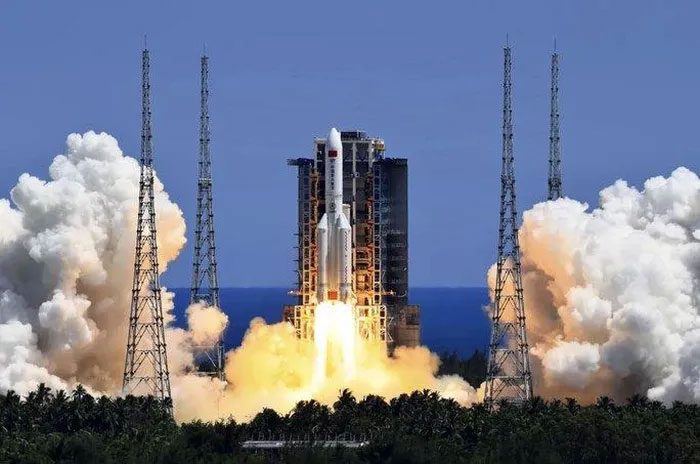Scientists predict that in just a few days, a section of the rocket body from the launch of two modules of the Tiangong space station will fall back to Earth.
According to Space, the Tiangong space station was launched using China’s Long March 5B rocket, and as with previous uses of this rocket, China did not implement a controlled re-entry system for the rocket’s core stage.

A Long March 5B rocket launch – (Photo: AP).
Typically, after launching a spacecraft or other space equipment with a rocket, a portion of the rocket body will fall back to Earth. NASA has explained that every rocket stage they use is programmed to plunge into the ocean upon re-entry.
This is a feature that the Long March 5B does not have. Ted Muelhaupt, a consultant from the Aerospace Corporation’s Chief Engineer’s Office—a non-profit organization in the U.S. that operates a federally funded research and development center—stated that the issue of space debris puts 88% of the world’s population at risk.
The rocket body is estimated to weigh around 23 tons, originating from the launch of two modules of the Tiangong space station that China is constructing in space.
Of course, this debris will burn up and break apart before landing; however, the risk of direct impact on humans is real.
A piece of “rocket debris” earlier this year scattered fragments across various regions in Asia, but fortunately, all fell in uninhabited areas.
According to Dr. Muelhaupt, the risk of a person being hit by rocket debris is 1 in 6 trillion, which is still a very low probability.





















































